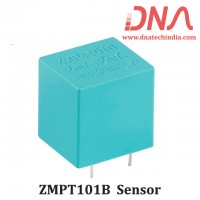DTMF Based Device Control
Aim |
|
The purpose of this project is to design an automated system that can be used to control devices in the event that one is not present to control device manually. The means of accessing the system will be through a remote telephone (cell phone or analog phone). |
|
The DTMF Telephone controller is ideal for remote control applications around your home, offices, shops and barns. You can control almost any device using this project. |
|
To control the devices from a remote place we are using DTMF (Dual Tone Multiple Frequency) technique. In DTMF technique whenever a key switch is pressed corresponding frequency is generated and transmitted over the phone line. This signal is received by the DTMF Decoder IC and given to 89s52 Microcontroller. |
|
The microcontroller then comes to know which switch has been pressed and accordingly turns ON/OFF the devices. It also displays the switch that you have pressed on the 7-Segment Display. |
Block Diagram: |
|
|
Block Diagram Description: |
1. Microcontroller : |
|
The controller is the heart of entire system, and the whole system should be analyzed in selecting the proper controller. The following items should be considered when selecting a controller:
We will be using ATMEL’s AT89S52 microcontroller. It is a 40 pin microcontroller with 128 bytes RAM & 4kb flash memory. |
2. Relay Driver: |
|
The Relays require suitable ‘PULL IN’ current or ‘HOLDING’ current (around 70ma) to turn it ON. Moreover the Relay coil voltage (12volts) is more that what the controller can handle. So to provide the necessary current & at the required voltage a relay driver circuit is required. We are using ULN2003 driver. |
3. Relay: |
|
Relays are components which are basically used to turn ON/OFF high current or Voltages devices. A relay is TURNED ON when a sufficient holding current is passed through its coil. We are using 12v SPDT relay i.e. the voltage required to energize the coil is 12v and of Single Pole Double Throw (SPDT) type i.e. it consists of one common Pole & two outputs namely the Normally Open (NO) & Normally Closed (NC) outputs. |
4. DTMF Decoder: |
|
We are using M8870 DTMF Decoder. In the course of a call if any button is pressed a tone corresponding to the button pressed is heard at the other end of the call. The received tone is processed by the microcontroller with the help of DTMF decoder MT8870.The decoder decodes the DTMF tone into its equivalent binary digit and this binary number is send to the microcontroller. |
5. Seven Segement Display |
|
A seven-segment display, or seven-segment indicator, is a form of electronic display device for displaying decimal numerals that is an alternative to the more complex dot-matrix displays. |
|
Seven-segment displays are widely used in digital clocks, electronic meters, and other electronic devices for displaying numerical information. |
|
Here we are using seven segment display, to display the Number pressed by caller to control device. |
6. Power Supply: |
|
We require regulated 5 volts for microcontroller, seven segment display, DTFM Deocder & approximately 12 volts for the Relay. These voltages are generated from 230v line voltage. |
Hardware Requirement: |
|
Software Requirement: |
|
APPLICATION: |
|
|
|
Text Books: |
|
Website: |
Magazines: |
|




